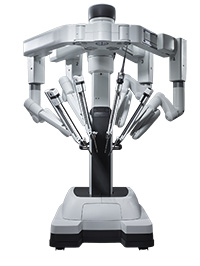Each year, millions of Americans suffer from a hernia. Some might not even realize it.
Hernias don’t always cause pain, and may only be visible when you cough or stand upright.
The only way to know for sure is to schedule a proper evaluation with your doctor.
What is a hernia?
A hernia occurs when an organ or fatty tissue begins to protrude from an opening inside the body, usually creating a noticeable lump or swelling at one of six regions between the middle of the abdomen and the groin area.
There are various stages of severity when you develop a hernia. The first stage occurs when the abdominal wall weakens or tears and begins to form a hernia sac that may contain fat, intestine or other internal tissues. A bulge may or may not be present during this stage.
As the condition progresses, the intestine can push further into the sac and create a visible bulge, which may flatten when you push on it or lie flat. This development does not cause immediate danger to the patient.
The contents of the sac may become trapped, and eventually strangle the intestine. This series of events cut off blood supply to the intestine, and will result in extreme pain that requires immediate surgical attention.
Surgical solutions
For many years, patients have feared the highly invasive incisions and slow recoveries associated with more traditional surgical solutions for hernia repair. These include open procedures that use a large incision line to stitch, staple and glue the affected region, and laparoscopic repairs that work through five entry points. Both of these techniques can incur a high reoccurrence rate, elevated risks of complications, and prolonged and painful periods of recovery.
 Robotic Surgery: A Better Option
Robotic Surgery: A Better Option
In recent years, the daVinci® surgical robot has transformed hernia repair and a number of other surgical procedures.
Utilizing the robot, procedures that normally required large or multiple incisions can now be performed through an opening that’s the diameter of a dime. This minimally invasive approach not only results in smaller incisions, but virtually no scarring and a much faster recovery time as well. Post-operative discomfort is significantly diminished, and does not require the use of potentially dangerous opioid medications.
The surgeon remains in complete control of the robot’s actions at all times, and navigates each step of the surgery from a nearby console while observing the procedure in high resolution. Guided by the surgeon’s movements, the robotic system performs with pinpoint precision.
Click here for more information on robotic surgery and to schedule a consultation.